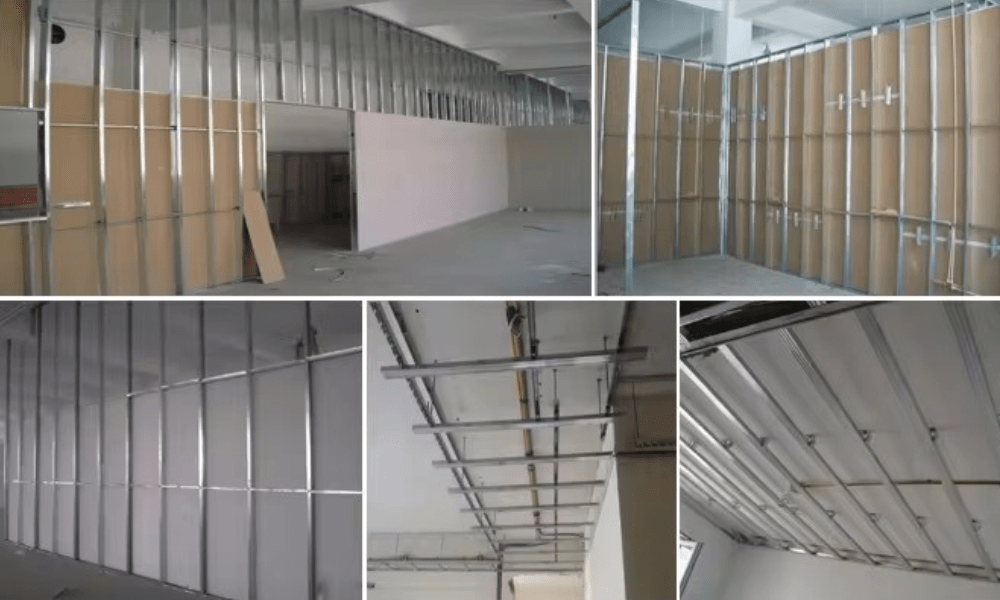
Furring Wall Meaning: 5 Key Reasons It’s Great for Construction
Introduction
In the realm of real estate construction, understanding the furring wall meaning is essential for both builders and investors. Furring walls play a critical role in creating even surfaces, providing insulation, and allowing space for plumbing and electrical systems. This blog delves into the significance of furring walls, examining their various components and applications to underscore their importance in construction projects.
What is a Furring Wall?
Furring Wall Meaning
The term “furring wall” refers to the construction technique used to create a level surface for the attachment of finish materials. Furring involves the installation of thin strips of wood or metal, known as furring strips, which are fastened to the structural wall. These strips provide a framework for attaching drywall, paneling, or other surface materials. The furring wall meaning encompasses not just the strips themselves but also the overall method of creating a suitable surface for finishing.
Detailed Aspects of Furring Walls
Furring Wall Detail
The furring wall detail includes various elements crucial to its construction. These elements include the choice of materials (wood or metal), the spacing of the furring strips, and the method of attachment. Proper furring wall detail ensures that the wall surface is even and ready for finishing. Additionally, it helps in accommodating insulation, electrical wiring, and other infrastructure elements. The detail involved in constructing a furring wall directly affects its functionality and durability.
Furring Wall for Plumbing
Furring walls are particularly important when it comes to plumbing. In many construction projects, plumbing lines need to be hidden behind the walls. A furring wall for plumbing provides the necessary space to run pipes and other plumbing components without compromising the structural integrity of the main wall. This setup not only improves the aesthetic appeal of the interior spaces but also makes future maintenance and repairs more accessible.
Furring Wall Thickness
Furring wall thickness is a critical factor that influences the overall effectiveness of the wall system. The thickness of the furring strips and the resulting wall space they create can vary based on the requirements of the project. Typically, the thickness might range from 1 inch to several inches, depending on the need for insulation, plumbing, or electrical infrastructure. Correct furring wall thickness ensures adequate space for these systems while maintaining structural integrity and providing a smooth surface for finishing materials.

Furring Wall Assembly
The process of furring wall assembly involves several steps. First, the furring strips are cut to the required length and then attached vertically or horizontally to the existing wall using nails, screws, or adhesives. The spacing between the strips is crucial and is typically dictated by the type of finish material to be applied. For instance, drywall may require closer spacing compared to paneling. After the strips are securely in place, insulation can be added between them if necessary. Finally, the finish material is attached to the furring strips, completing the assembly process.
Why Furring Walls Matter in Real Estate Construction Understanding the furring wall meaning and its detailed components is essential for several reasons:
Surface Evenness
Furring walls are critical in achieving a flat and even surface for the attachment of finish materials such as drywall, paneling, or tiles. In many construction projects, the underlying structural walls might be uneven due to imperfections in the masonry or framing. By installing furring strips, builders can correct these irregularities, ensuring that the finish materials can be applied smoothly and uniformly. This not only enhances the aesthetic appeal of the walls but also ensures that all attached materials are securely fixed, preventing potential issues such as cracking or warping over time.
Insulation And Energy Efficiency
Furring walls significantly contribute to the thermal efficiency of buildings. By creating a gap between the structural wall and the finish material, there is space to install insulation. This additional insulation layer helps in maintaining the building’s internal temperature, keeping it warm in the winter and cool in the summer. Improved insulation translates directly to lower energy consumption, as heating and cooling systems don’t have to work as hard to maintain a comfortable indoor climate. This can result in substantial energy cost savings and a reduced carbon footprint, aligning with increasing environmental and sustainability standards in modern construction.
Infrastructure Accommodation
Modern buildings are equipped with extensive plumbing, electrical, and HVAC systems that need to be integrated seamlessly within the walls. Furring walls provide the necessary space to house these systems without compromising the structural integrity of the main walls. This setup allows for more straightforward installation and maintenance of these systems. For example, running plumbing pipes within the furring space can prevent them from freezing in colder climates by keeping them within the insulated envelope of the building. Similarly, electrical wiring can be easily routed without needing to cut into the structural walls, reducing potential points of failure and making future upgrades more manageable.

Moisture Control
Moisture management is a critical aspect of building durability, particularly in basements, bathrooms, and other areas prone to dampness. Furring walls can incorporate a moisture barrier or vapor barrier within the assembly, preventing water ingress from affecting the finish materials and underlying structure. In basements, where damp conditions are more common, furring walls can help create a dry and habitable space by providing a gap where moisture can be controlled and managed effectively. This can prevent issues such as mold growth, wood rot, and structural deterioration, thereby extending the lifespan of the building and maintaining a healthy indoor environment.
Aesthetic and Functional Flexibility
Furring walls offer considerable flexibility in both design and functionality. They allow for the easy modification and updating of interior spaces without extensive demolition. For instance, changing the layout of a room or updating the interior design becomes simpler, as the furring walls can accommodate new finishes and installations with minimal disruption. This flexibility is particularly valuable in commercial spaces where the requirements might change frequently. Additionally, furring walls can be used to create decorative elements, such as niches or alcoves, enhancing the interior design possibilities. Their ability to incorporate various infrastructure components without visible clutter further contributes to cleaner and more visually appealing spaces.
Practical Applications of Furring Walls
In real estate construction, the application of furring walls extends across various types of projects, including residential, commercial, and industrial buildings. Here are some practical applications:
Residential Buildings: In homes, furring walls are often used to create smooth interior surfaces, accommodate insulation, and provide space for plumbing and electrical systems. They are especially useful in basements and attics.
Commercial Buildings: In commercial spaces, furring walls help in managing large amounts of wiring and plumbing required for various business operations. They also contribute to noise reduction and improved energy efficiency.
Industrial Buildings: For industrial constructions, furring walls play a critical role in housing complex HVAC systems and other mechanical infrastructures without compromising the structural integrity of the main walls.
Conclusion
In conclusion, the furring wall meaning extends beyond a mere construction technique; it is a crucial element that enhances the structural and functional aspects of real estate projects. By understanding the detailed aspects of furring walls, including furring wall detail, furring wall for plumbing, furring wall thickness, and furring wall assembly, builders and investors can make informed decisions that improve the quality and efficiency of their projects. Whether for residential, commercial, or industrial applications, furring walls are an indispensable part of modern construction, providing benefits that go beyond aesthetics to encompass energy efficiency, infrastructure accommodation, and overall building integrity.
By delving into the intricacies of furring walls, we uncover their indispensable role in creating functional, efficient, and aesthetically pleasing structures in the real estate industry. As you embark on your next construction project, consider the significance of furring walls and how they can contribute to your success.
Can't Find What you are looking for?
Tell us about your choice here!









